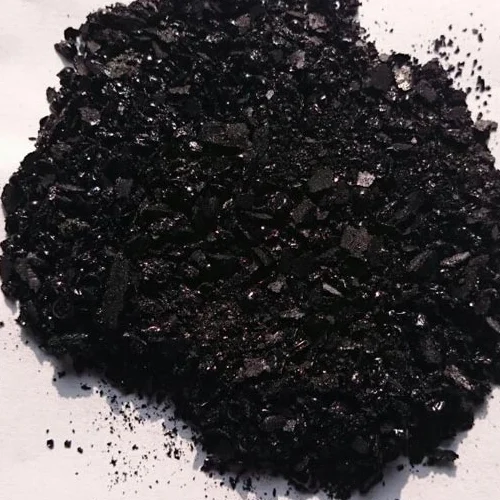Similar Product to Sulphur Black 1 for Textile and Dye Applications
Understanding Sulphur Black 1 A Versatile Dye in the Textile Industry
Sulphur Black 1 is a prominent dye used primarily in the textile industry, known for its deep black color and versatility in various applications. As one of the oldest synthetic dyes, Sulphur Black 1 has carved out a significant niche due to its unique properties and affordability, making it a favored choice for dyeing cotton and other cellulose fibers.
Chemical Composition and Properties
Sulphur Black 1 belongs to the class of dyes known as sulphur dyes. These dyes are characterized by their availability in the form of insoluble powder, which must be reduced to a soluble form before application. The chemical structure of Sulphur Black 1 features a complex arrangement of sulfur atoms, giving it remarkable stability and colorfastness. When reduced, it forms a soluble compound that can easily penetrate the fiber, which is essential for achieving an even and vibrant color.
Dyeing Process
The dyeing process using Sulphur Black 1 typically involves several steps. Initially, the dye must be reduced to its soluble form using a reducing agent, commonly sodium sulfide or sodium dithionite. Once the dye is soluble, it can be applied to the fabric in a dye bath. The fabric is immersed in this bath, allowing the dye to penetrate the fibers effectively.
After dyeing, the fabric goes through an oxidation process to reform the insoluble dye, securing the dye within the fibers. This step is crucial as the formation of the insoluble state not only enhances the color intensity but also improves the wash and light fastness of the dye. Following the dyeing and oxidation, the fabric is washed to remove any excess dye and then dried.
Advantages of Sulphur Black 1
sulphur black 1 product

One of the most significant advantages of Sulphur Black 1 is its cost-effectiveness. Compared to other dyes, it is relatively inexpensive, making it a popular choice for large-scale industrial applications. Additionally, Sulphur Black 1 offers excellent light and wash fastness, which is essential for textiles that require long-lasting color integrity. Its ability to produce deep, rich blacks adds to its appeal, particularly in the fashion and home textiles sectors.
Moreover, Sulphur Black 1 is environmentally favorable when compared to certain other dyes. The production process generates less harmful waste, and the dye itself can be applied under controlled conditions, minimizing environmental impact.
Applications
Sulphur Black 1 is predominantly used in the dyeing of cotton fabrics, but its application extends to other natural fibers as well. It is commonly utilized in the production of denim, workwear, and various textile products that demand durable coloration. Additionally, due to its robust nature, the dye is often found in products that undergo rigorous washing and wear.
The versatility of Sulphur Black 1 also extends to the leather industry, where it is used for dyeing leather products. As the demand for eco-friendly options in the fashion industry increases, Sulphur Black 1's relatively lower environmental impact may favor its continued use.
Conclusion
In summary, Sulphur Black 1 stands out as a significant player in the dyeing industry, characterized by its cost-effectiveness, excellent colorfastness, and versatility across various applications. Its unique chemical properties and the simplicity of the dyeing process make it a reliable choice for manufacturers seeking to create high-quality textile products. As we continue to explore sustainable practices within the industry, Sulphur Black 1 may play a vital role, bridging the gap between affordability and environmental responsibility in the world of dyeing.
-
The Timeless Art of Denim Indigo Dye
NewsJul.01,2025
-
The Rise of Sulfur Dyed Denim
NewsJul.01,2025
-
The Rich Revival of the Best Indigo Dye
NewsJul.01,2025
-
The Enduring Strength of Sulphur Black
NewsJul.01,2025
-
The Ancient Art of Chinese Indigo Dye
NewsJul.01,2025
-
Industry Power of Indigo
NewsJul.01,2025
-
Black Sulfur is Leading the Next Wave
NewsJul.01,2025

Sulphur Black
1.Name: sulphur black; Sulfur Black; Sulphur Black 1;
2.Structure formula:
3.Molecule formula: C6H4N2O5
4.CAS No.: 1326-82-5
5.HS code: 32041911
6.Product specification:Appearance:black phosphorus flakes; black liquid

Bromo Indigo; Vat Bromo-Indigo; C.I.Vat Blue 5
1.Name: Bromo indigo; Vat bromo-indigo; C.I.Vat blue 5;
2.Structure formula:
3.Molecule formula: C16H6Br4N2O2
4.CAS No.: 2475-31-2
5.HS code: 3204151000 6.Major usage and instruction: Be mainly used to dye cotton fabrics.

Indigo Blue Vat Blue
1.Name: indigo blue,vat blue 1,
2.Structure formula:
3.Molecule formula: C16H10N2O2
4.. CAS No.: 482-89-3
5.Molecule weight: 262.62
6.HS code: 3204151000
7.Major usage and instruction: Be mainly used to dye cotton fabrics.

